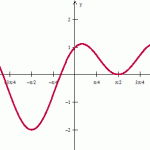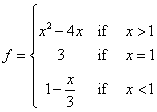I ended up looking at quite a few different lesson plans using excel. Here are three that I thought were interesting and what I liked about them.
Lesson Name: Pythagorean Theorem on Excel
Link: http://www.knowledge.state.va.us/cgi-bin/lesview.cgi?idl=292
This lesson is intended for 7th, 8th and 9th graders and is meant to reinforce the concept of the Pythagorean theorem. This lesson uses excel to compute the lengths of the triangle using the Pythagorean theorem (assuming that the student knows two of the sides). After completing this lesson on my own I am a little disappointed. While this does give the students some basic knowledge of excel and teaches them how to use functions in excel, it doesn’t seem to add anything to the lesson math wise. This lesson assumes that the students know the basics of the Pythagorean theorem and how to calculate for it. Instead, this uses excel to do the actual calculations while the students only have to plug in the numbers.
Lesson Name: Comparing Graphs
Link: http://www.northcanton.sparcc.org/~technology/excel/files/comparing_graphs.html
This lesson is for 8th graders and it looks at a set of data and different representations of it done in excel. This lesson came with a set up of three sets of data and three different graphs or charts to explore. What I like about this lesson is that it is very easy to understand and to move around in. I think it does a good job of presenting the ideas. Though the lesson came with a read-only ready document for another teacher to use, one thing that I think would be beneficial would be for the students to be able to manipulate the data and see how that changes the bar graph, pie chart and line graph. A more advanced student could be taught how to create the graphs in excel themselves, as well.
Lesson Name: Probability Spreadsheets
Link: http://www.lessonplanspage.com/MathCIProbSpreadsheets6HS.htm
This lesson is for sixth graders. It focuses on the probability of rolling dice or tossing coins and uses a spreadsheet to record the data. Using excel isn’t the main focuses of this lesson. Instead, it uses excel to enhance the lesson by giving students a place to organize their data. Students also make a graph using excel to analysis their data. This is a good use of excel because it doesn’t become take over the lesson and make it all about technology; instead it enhances the lesson. This is better than doing it on paper because it is easier to keep organized and is clean. This will be better for younger students who may not always keep their work orderly.


